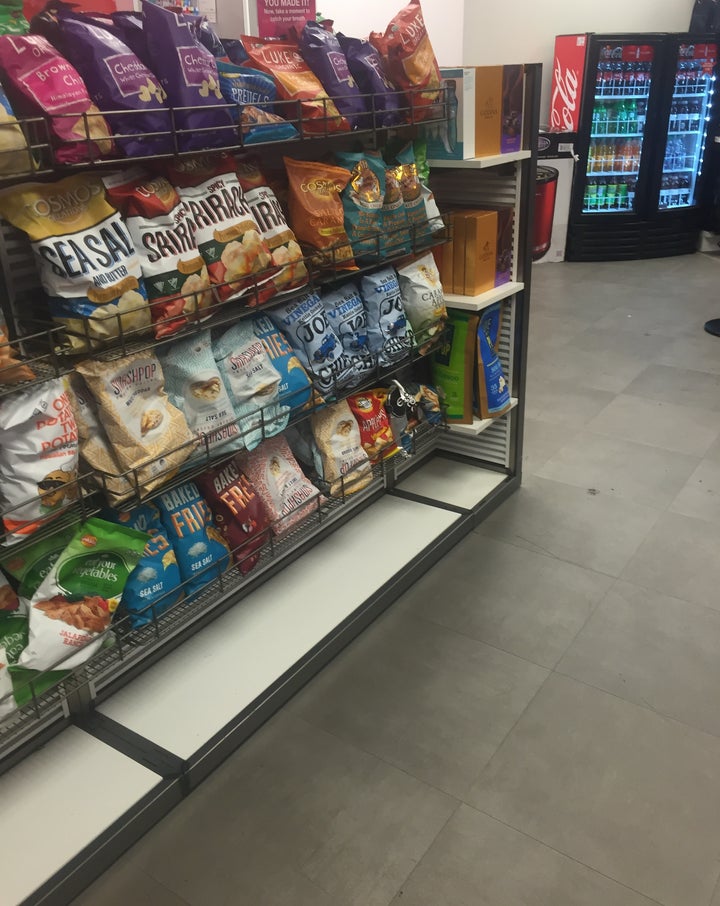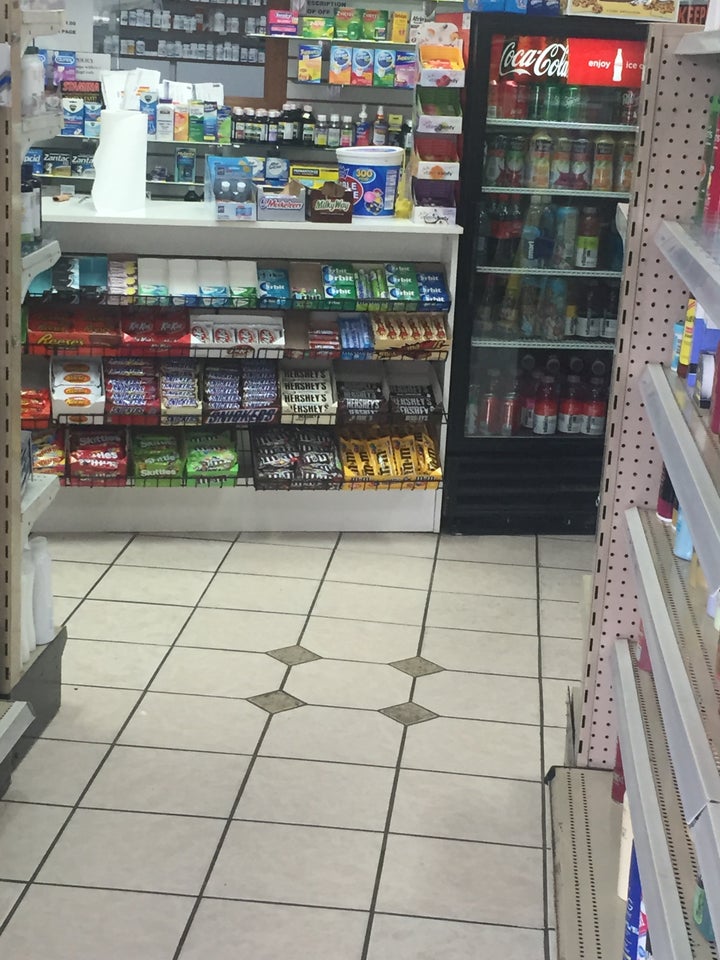How ubiquitous foods put us all at risk … some more than others

A child considers his food choices at a laundromat
If you happen to enter a department store this holiday season, you might expect displays of home goods and electronics, women’s and men’s clothing, jewelry, baggage, cosmetics, and accessories. What you might not expect are aisles of candy, cookies, chips, and soda. After all “food” is not generally one of the departments in a department store. A department store is not a “food store.” Or is it?
Surprising food sources
It turns out, department stores do often sell food—and drinks. The drinks they sell are almost always sweetened, and the “food” (edible substance if not nourishing sustenance) is usually highly processed pre-packed product.
Such food and drink might be expected from categorical “food stores” (e.g., supermarkets, grocery stores, corner stores, and bodegas). Likewise restaurants, bars, and cafes are obvious retailers in the food-and-drink space. Department stores might be less-intuitive “food stores,” although they are far from alone among other business that surprisingly sell foods and beverages.
My own research finds foods and beverages being sold from a wide variety of businesses: from pharmacies, gas stations, and newsstands, to barber shops and beauty salons, auto shops and car washes, sporting goods stores and apparel shops, banks and check cashing outlets, hardware stores, laudromats, dollar stores, office depots … even medical offices. The proportion of such businesses selling food or drink varies considerably by neighborhood, as do the specific types of products that are on offer.
Neighborhood disparities
For instance, take the Bronx, where most of my patients live. The Bronx is home to mostly lower-income minority communities afflicted by staggering rates of obesity and diet-related diseases. Diabetes in particular is prevalent, and a high portion of the population frequently consumes sugary beverages. How unfortunate then that nearly 40% of all Bronx businesses offer some kind of food or beverage with nearly half of these businesses offering less-healthful items exclusively (items like sodas, candies, cookies, cakes, and frozen confections).
In contrast, consider Manhattan’s Upper East Side, an upper-income white community with relatively low levels of obesity, diabetes, and sugary-drink consumption. The number of businesses offering foods and beverages among the white and wealthy of Manhattan is only a little more than one in four, and only a small minority (

Food offerings in a department store

Assortment of treats at the pharmacy
